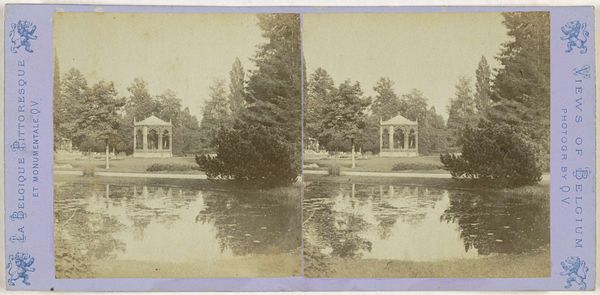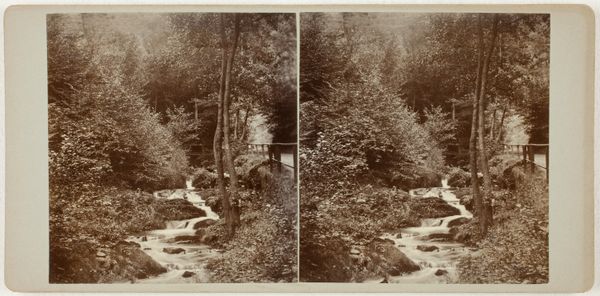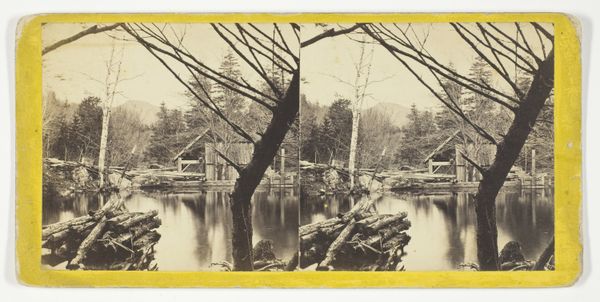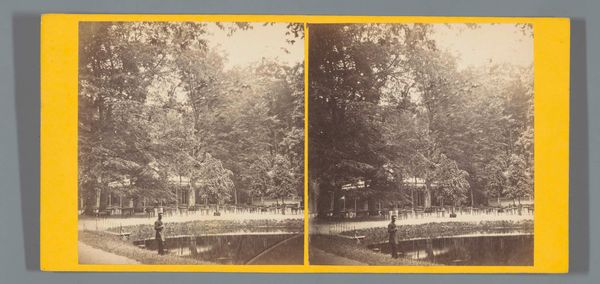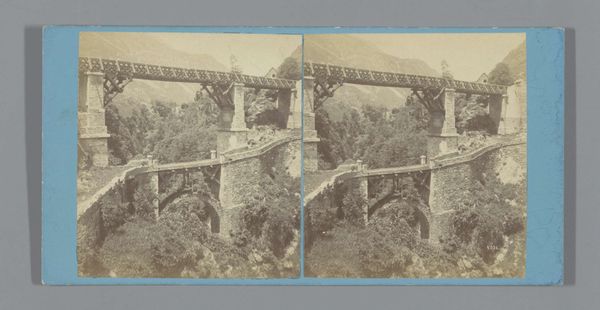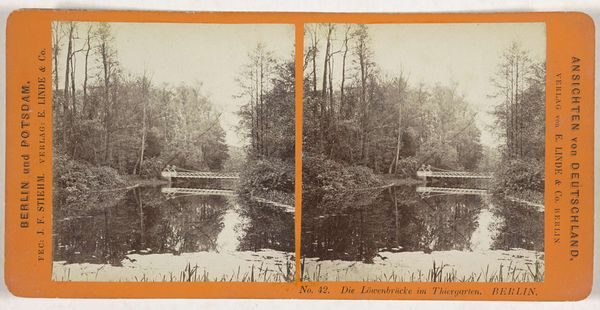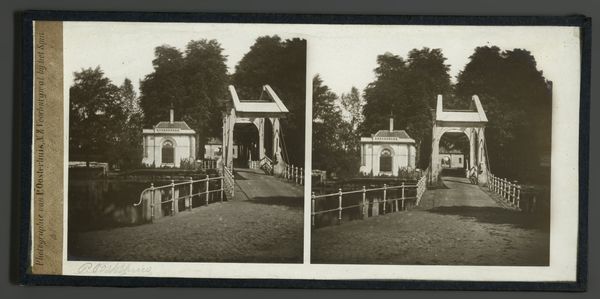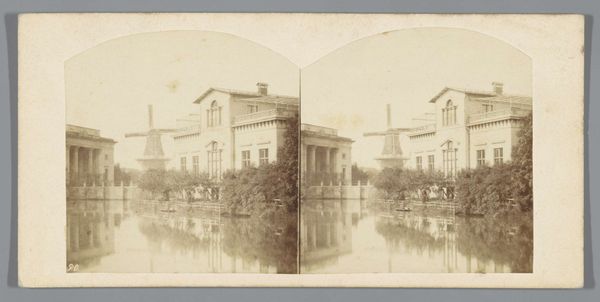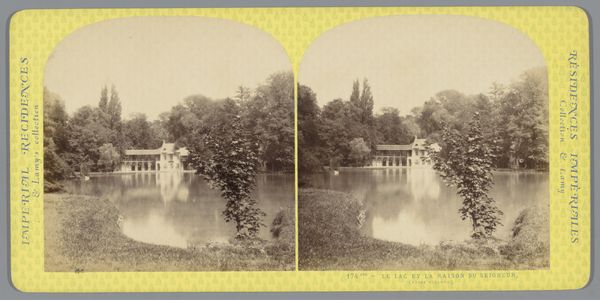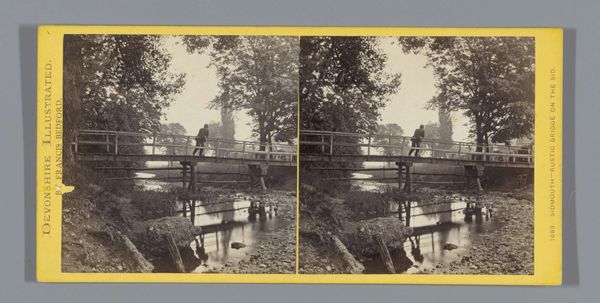
photography
#
water colours
#
landscape
#
photography
#
coloured pencil
#
park
Dimensions: height 85 mm, width 170 mm
Copyright: Rijks Museum: Open Domain
Editor: This photograph, "Brug in een park te Bad Schwalbach," dating from around 1860 to 1880, by Laurentius Herzog, presents a very tranquil scene. It’s a bridge in a park, of course. There are figures crossing, but everything is so still, almost melancholic. What do you see in this piece, and how might we interpret it through a wider lens? Curator: I see more than just a picturesque scene. Consider the rise of these pleasure gardens in the mid-19th century, spaces specifically designed for leisure and curated encounters with nature. Who were these spaces truly *for*? Looking at the figures on the bridge, how do you imagine their access to, and experience of, this manicured "nature" differed based on their class, gender, or perhaps even their ability? Editor: That’s a good point. I hadn't considered it like that. I guess I was seeing the calm surface and missed the underlying questions of access and privilege. It speaks to the artifice of the image itself, that a park always needs people who take care of the space. Curator: Exactly! And further, think about the role of photography itself during this period. It became a tool, consciously or unconsciously, used to disseminate certain ideologies about landscape, leisure, and who belongs where. Do you notice anything about how the people are posing or dressed? Editor: Well, they’re not posing as such. It’s very informal and candid, or appears to be. They're wearing elegant clothing. Curator: Indeed. Now imagine how a labourer or working-class individual might be represented—or entirely absent—from these images and these spaces. That absence is as telling as their presence, isn't it? The picture invites us to consider issues of representation, exclusion and social inequality that defined that era. Editor: I see what you mean. So, the photo isn't just a nice view; it’s a document that unintentionally reveals social structures of the time. I will always look more closely now. Curator: Precisely. By engaging critically with these visual texts, we gain insight into the complex narratives shaping both the past and our present.
Comments
No comments
Be the first to comment and join the conversation on the ultimate creative platform.
